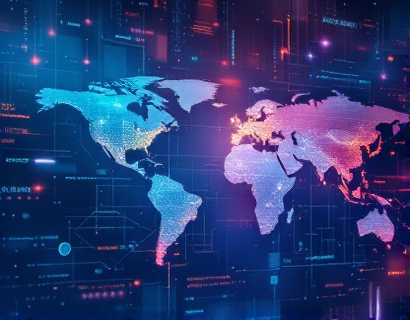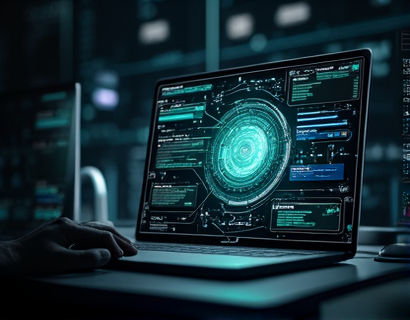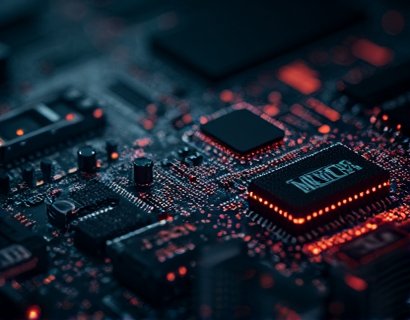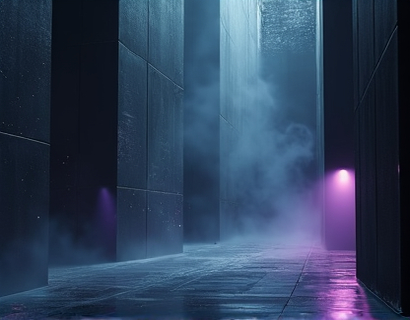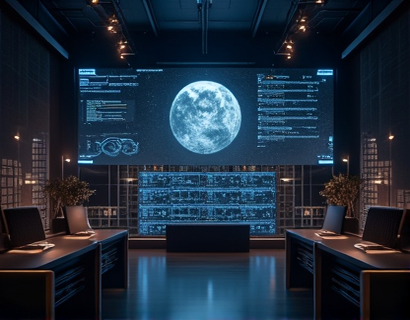Crafting Secure and Personalized Online Memorials with AI and Blockchain
The digital age has transformed numerous aspects of our lives, including how we remember and honor our loved ones who have passed away. Traditional methods of creating memorials, such as physical monuments or albums, are being complemented by innovative digital solutions that offer new dimensions of personalization, security, and accessibility. This article explores the intersection of artificial intelligence (AI) and blockchain technology in crafting secure and personalized online memorials, providing a unique and meaningful way to create lasting tributes for those we cherish.
In recent years, the demand for digital memorials has surged, driven by bereaved families and individuals seeking meaningful ways to commemorate their loved ones. The need for secure, personalized, and enduring online spaces to honor memories has led to the development of advanced platforms that integrate cutting-edge technologies like AI and blockchain. These platforms aim to offer more than just a digital placeholder; they strive to create immersive and interactive experiences that capture the essence of the person being remembered.
Understanding AI in Digital Memorials
Artificial intelligence plays a pivotal role in enhancing the personalization and interactivity of online memorials. AI algorithms can analyze vast amounts of data, including text, images, and videos, to curate a comprehensive and dynamic tribute. For instance, AI can automatically organize and display a timeline of the deceased's life, highlighting significant events, milestones, and personal achievements. This timeline can be enriched with photos, videos, and personal stories contributed by family and friends, creating a rich tapestry of memories.
Moreover, AI-powered chatbots can be integrated into these platforms to provide a conversational interface for users. These chatbots can answer questions, share anecdotes, and even engage in conversations about the deceased, offering a sense of companionship and continuity. The use of natural language processing (NLP) enables these chatbots to understand and respond to user queries in a natural and empathetic manner, making the experience more human-like and comforting.
Blockchain: Ensuring Security and Authenticity
Blockchain technology, known for its role in cryptocurrencies, offers a robust solution for ensuring the security and integrity of digital memorials. By leveraging blockchain, these platforms can provide a decentralized and tamper-proof ledger to store and manage memorial data. This means that once a memory or tribute is added to the blockchain, it cannot be altered or deleted, ensuring that the memorial remains a permanent and authentic record of the person's life.
The decentralized nature of blockchain also enhances privacy and control for users. Instead of relying on a central authority to manage the memorial, the data is distributed across a network of nodes, making it resistant to censorship and data breaches. Users can have full control over who can access and contribute to the memorial, ensuring that only authorized individuals can make changes or view sensitive information.
Creating a Personalized Memorial Experience
One of the key advantages of using AI and blockchain together is the ability to create highly personalized memorials. AI can analyze the preferences and habits of the deceased, as well as the contributions from loved ones, to tailor the memorial experience. For example, the platform can recommend specific themes, music, or quotes based on the person's interests and life story. This personalized approach ensures that the memorial resonates deeply with those who visit it, providing a more meaningful and emotional connection.
Furthermore, AI can facilitate the creation of interactive elements within the memorial. Virtual reality (VR) and augmented reality (AR) technologies, powered by AI, can be used to recreate significant locations or moments from the deceased's life. Users can explore these virtual environments, reliving cherished memories and experiences. This immersive aspect adds a new dimension to digital memorials, making them more engaging and memorable.
Preserving Memories with Blockchain
Blockchain's immutable and transparent nature makes it an ideal solution for preserving digital memories. Each contribution to the memorial, whether it's a photo, video, or written message, can be recorded as a unique block in the chain. This ensures that every piece of content is timestamped and verifiable, providing a clear and unalterable history of the memorial's evolution.
Additionally, blockchain can facilitate the distribution of digital assets, such as cryptocurrencies or tokens, as part of the memorial. These assets can be used to support charitable causes or initiatives that were important to the deceased, adding a layer of purpose and legacy to the memorial. The transparency of blockchain ensures that these transactions are secure and traceable, providing peace of mind for those involved.
User-Friendly Interface and Accessibility
To ensure that these advanced technologies are accessible to a wide range of users, the platform must prioritize a user-friendly interface. Intuitive design and clear navigation are essential, allowing users to easily create, manage, and share their memorials. The platform should support multiple devices, including desktops, tablets, and smartphones, ensuring that users can access their memorials anytime and anywhere.
Accessibility is also a critical consideration. The platform should be designed to accommodate users with various abilities, including those with visual or hearing impairments. Features such as text-to-speech, high-contrast modes, and closed captions can enhance the user experience for a broader audience.
Community and Support
Creating a digital memorial is often an emotional and sometimes isolating process. To address this, the platform can foster a sense of community by allowing users to connect with others who are going through similar experiences. Forums, support groups, and shared resources can provide a space for users to seek advice, share stories, and offer mutual support.
Professional support is also crucial. The platform can offer access to grief counselors and therapists who specialize in bereavement, providing users with the emotional support they need during this difficult time. AI-driven tools can also monitor user interactions and offer personalized recommendations for support resources based on individual needs.
Future Prospects and Innovations
The integration of AI and blockchain in digital memorials is still in its early stages, with numerous opportunities for innovation and growth. Future developments could include the use of AI to generate personalized poetry or music based on the deceased's life, creating unique and heartfelt tributes. Blockchain could also be expanded to include smart contracts for managing legacies, ensuring that the deceased's wishes are honored and executed as intended.
Another exciting area is the integration of AI-driven predictive analytics to help families prepare for and cope with the loss. By analyzing patterns and providing insights, these tools can offer proactive support and resources, helping to ease the transition and healing process.
As technology continues to evolve, the potential for AI and blockchain to transform the way we create and experience digital memorials is vast. These technologies not only offer enhanced security and personalization but also open up new possibilities for how we remember and honor our loved ones, ensuring that their legacies live on in meaningful and lasting ways.









